You’ve decided to purchase a Central Vacuum system but still have a few questions regarding building your dream system. How do I choose a system? How many inlets are average for a 2000 sq. foot home? How much does the hose weigh and what kind is the best for my home? To guide the average consumer in creating the best system for their needs we have explained each piece of equipment needed to build a dream system.
Power Unit
First you will need to establish the size of the power unit your system will need to effectively clean your home. Using the square footage of a home we have broken down home size into 4 categories.
Small home or condo <3,000 sq. feet
Medium home – 3,000-6,000 sq. feet
Large home – 6,000-9,000 sq. feet
Very large home – 9,000-12,000 sq. feet
The next step is to decide what type of power unit you will need. This is a personal preference for most consumers taking into consideration allergies, cost of supplies and required maintenance. There are 3 types of units: Bagged, Bagless with filter and Cyclonic.

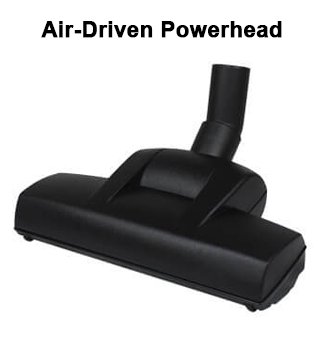
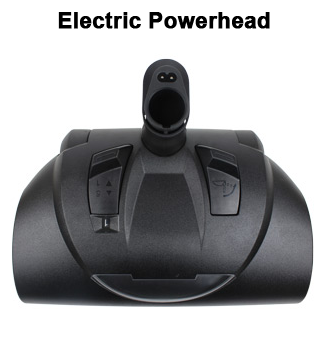
Powerheads
Not only is the square footage of your home important when choosing a central vac unit, but also the type of flooring. Powerheads, either electric or air-driven, feature a revolving brush that separates the carpet and rug fibers freeing debris. Electric powerheads need to be compatible with the central vac hose while air-driven powerheads work with any type of hose. Electric powerheads are the best and work well with homes that have pets and mostly carpet. Air-driven powerheads are appropriate for homes with minimal carpet and no pet hair. If your home has all smooth flooring like hardwood, tile and others, a powerhead is not required.
Hose
Hoses are lightweight weighing between 6-10 lbs. and are made of a crushproof material. Depending on the model the lengths will vary from 30-50 feet and come in 4 different types.
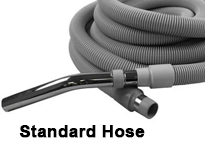
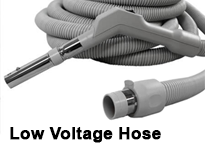
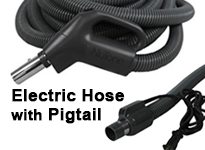
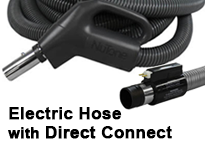
Standard hose: Has a continuous metal band on the inlet end and no switch on hose handle.
Low voltage hose: Has a split metal band on the inlet end and on/off switch on hose handle.
Electric hose with pigtail: Has an 8-foot electric cord extending from the inlet end and 3-way switch on hose handle.
Electric hose with direct connect: Has 2 prongs on the inlet end that plug into a 120-volt receptacle on the inlet. The hose handle has a 3-way switch.
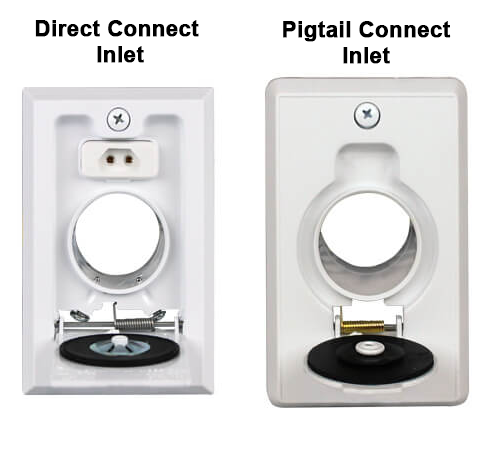
Inlets
Next step is choosing the type of inlet that best suits your needs and is compatible with the hose and powerhead. The 2 types of inlets available are electrified and low voltage. Both have a low voltage wire that is run from the inlet to the vacuum unit so the unit can be turned on. Electrified inlets have a high voltage wire that is run from the inlet to the nearest electric outlet which gives power to an electric carpet brush. These are only installed when an electric carpet brush will be used.
When an electric carpet brush will not be used, or it is not desirable or feasible to install electrified inlets, then low voltage inlets are used. These have to be located near electric outlets when an electric carpet brush will be used. This allows for the pigtail cord from the end of the hose to be plugged into the electric outlet.

Materials
All-in one kits are ideal for DIY’s who want to install a central vacuum and take advantage of package pricing. Available kits are for either low voltage or electric and include the power unit; accessory kit with hose, powerhead and attachments and installation material. Additional accessories like a dustpan (read One more reason to love your central vacuum system) or hose sock (read What is a central vacuum hose sock) can be added. To determine the number of inlets a home needs a good rule of thumb is to figure 1 inlet per 700 square feet of living space when using a 30-foot hose. We also offer custom kits with our Central Vacuum Kit Builder.
Central vacuum systems have many benefits for your home and your health (read Want better air quality, how about a central vac system). If you have any questions or concerns please feel free to call our friendly experts at 1-800-533-3249 and they can assist you. Don’t forget to visit our Facebook page.

 Please Wait ...
Please Wait ...
Comments (0)